The League of Nations “ war to

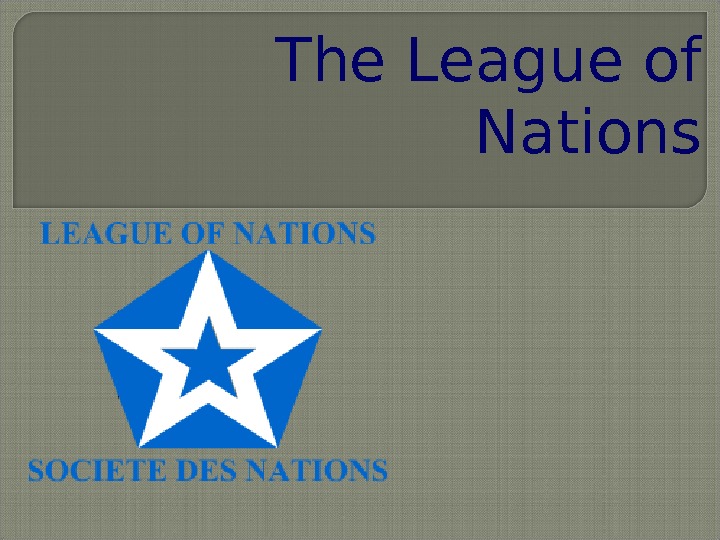
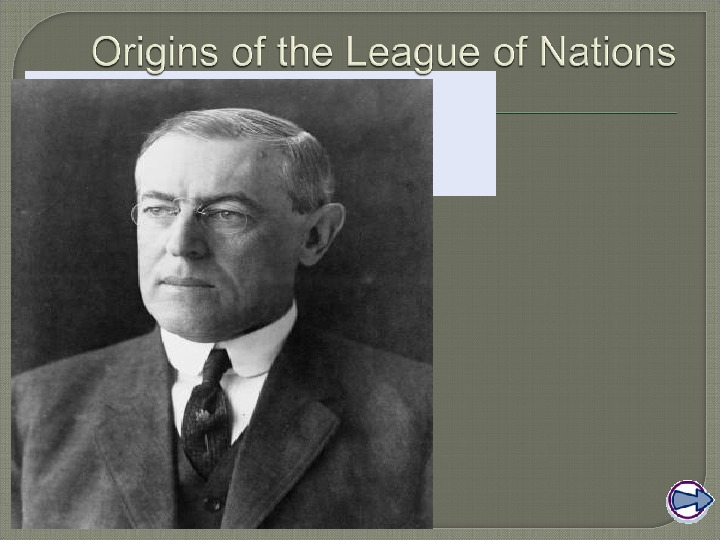
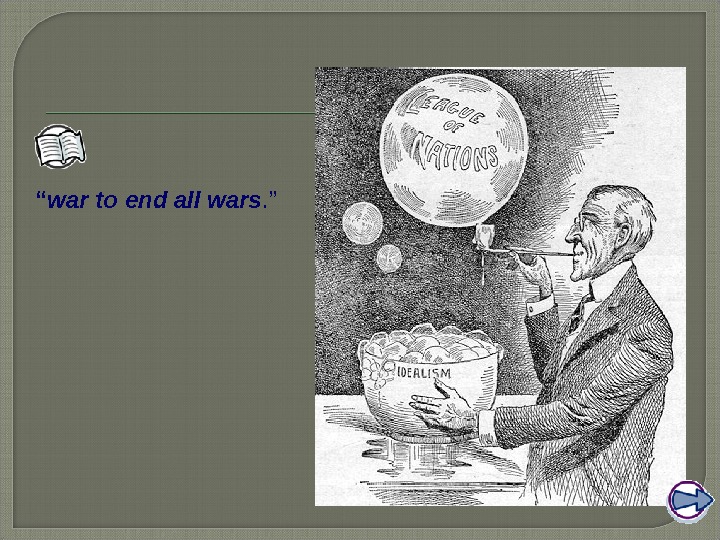
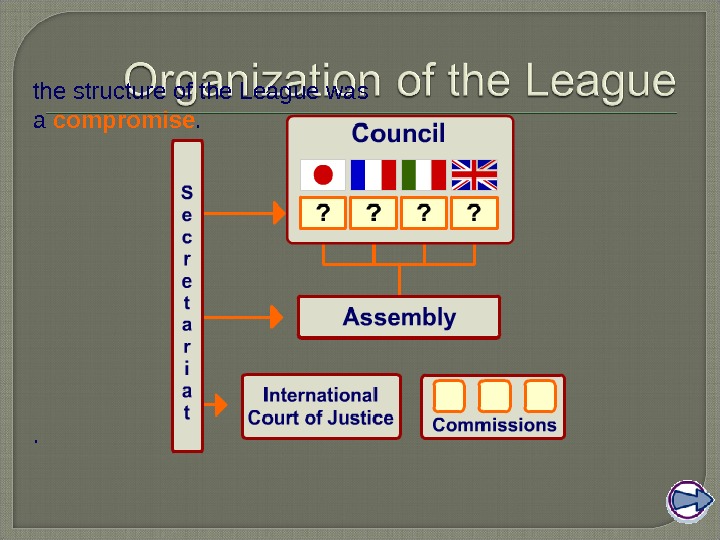
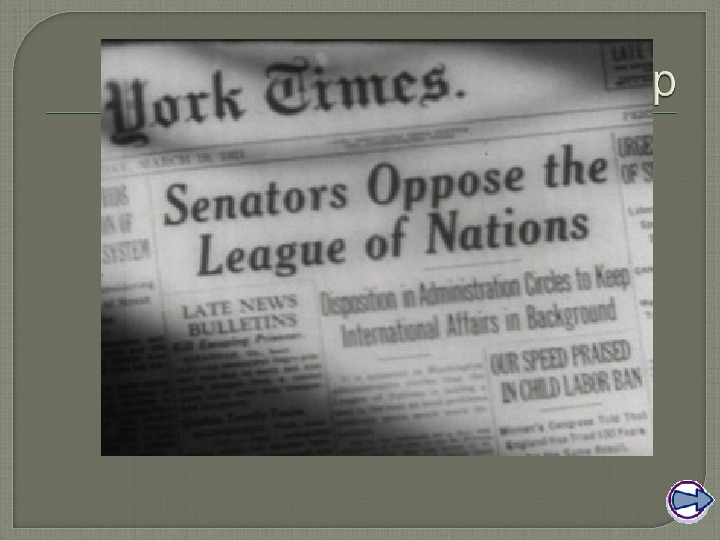
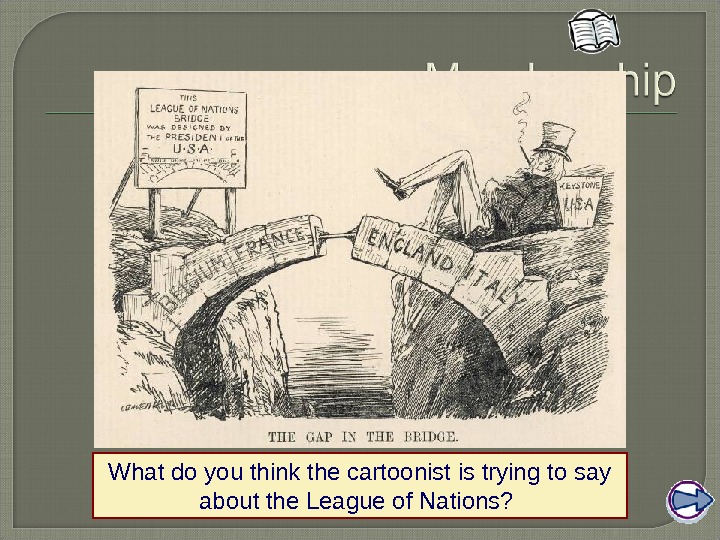
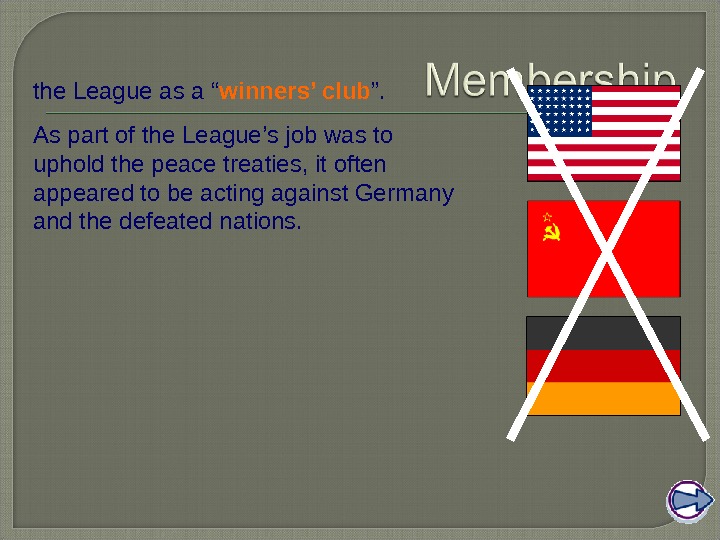
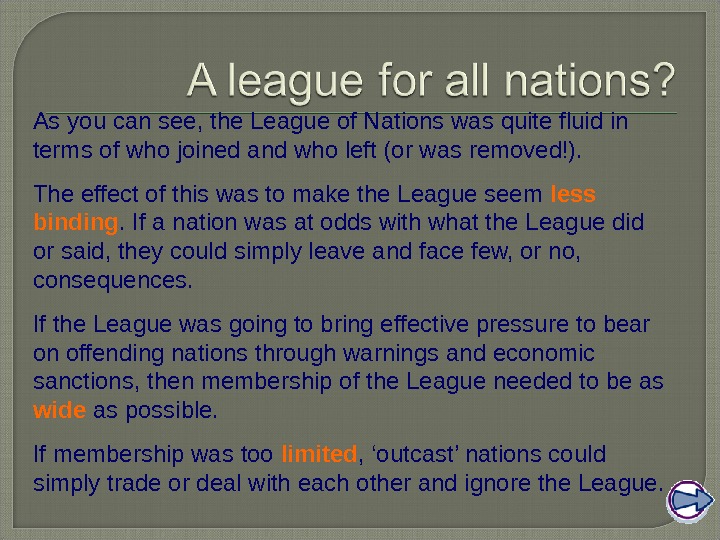
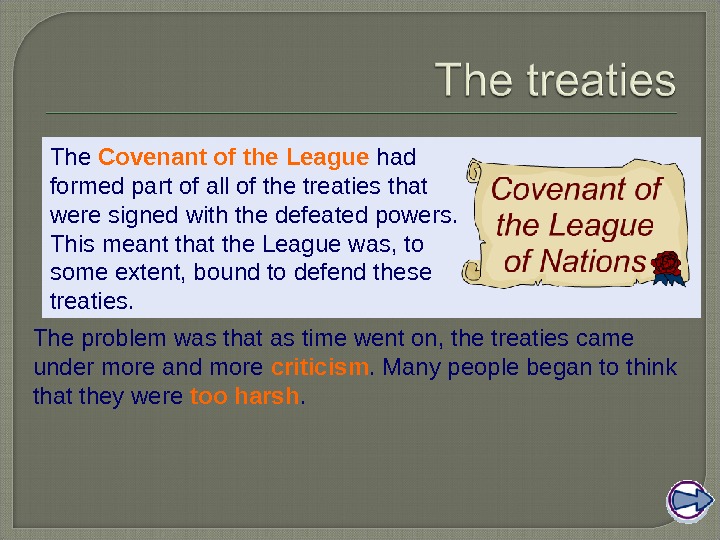

- Размер: 1.7 Mегабайта
- Количество слайдов: 10
Описание презентации The League of Nations “ war to по слайдам
 The League of Nations
The League of Nations

 “ war to end all wars. ”
“ war to end all wars. ”
 the structure of the League was a compromise. .
the structure of the League was a compromise. .

 What do you think the cartoonist is trying to say about the League of Nations?
What do you think the cartoonist is trying to say about the League of Nations?
 the League as a “ winners’ club ”. As part of the League’s job was to uphold the peace treaties, it often appeared to be acting against Germany and the defeated nations.
the League as a “ winners’ club ”. As part of the League’s job was to uphold the peace treaties, it often appeared to be acting against Germany and the defeated nations.
 As you can see, the League of Nations was quite fluid in terms of who joined and who left (or was removed!). The effect of this was to make the League seem less binding. If a nation was at odds with what the League did or said, they could simply leave and face few, or no, consequences. If the League was going to bring effective pressure to bear on offending nations through warnings and economic sanctions, then membership of the League needed to be as wide as possible. If membership was too limited , ‘outcast’ nations could simply trade or deal with each other and ignore the League.
As you can see, the League of Nations was quite fluid in terms of who joined and who left (or was removed!). The effect of this was to make the League seem less binding. If a nation was at odds with what the League did or said, they could simply leave and face few, or no, consequences. If the League was going to bring effective pressure to bear on offending nations through warnings and economic sanctions, then membership of the League needed to be as wide as possible. If membership was too limited , ‘outcast’ nations could simply trade or deal with each other and ignore the League.
 The Covenant of the League had formed part of all of the treaties that were signed with the defeated powers. This meant that the League was, to some extent, bound to defend these treaties. The problem was that as time went on, the treaties came under more and more criticism. Many people began to think that they were too harsh.
The Covenant of the League had formed part of all of the treaties that were signed with the defeated powers. This meant that the League was, to some extent, bound to defend these treaties. The problem was that as time went on, the treaties came under more and more criticism. Many people began to think that they were too harsh.
 The League of Nations had some good points! It had a clear structure and set procedures for dealing with aggressive nations. It had an initial membership of 42 nations. The League provided a forum in which both large and small nations could discuss international problems. The League was a step away from the old system of secret treaties and alliances. The League also undertook useful humanitarian work.
The League of Nations had some good points! It had a clear structure and set procedures for dealing with aggressive nations. It had an initial membership of 42 nations. The League provided a forum in which both large and small nations could discuss international problems. The League was a step away from the old system of secret treaties and alliances. The League also undertook useful humanitarian work.

